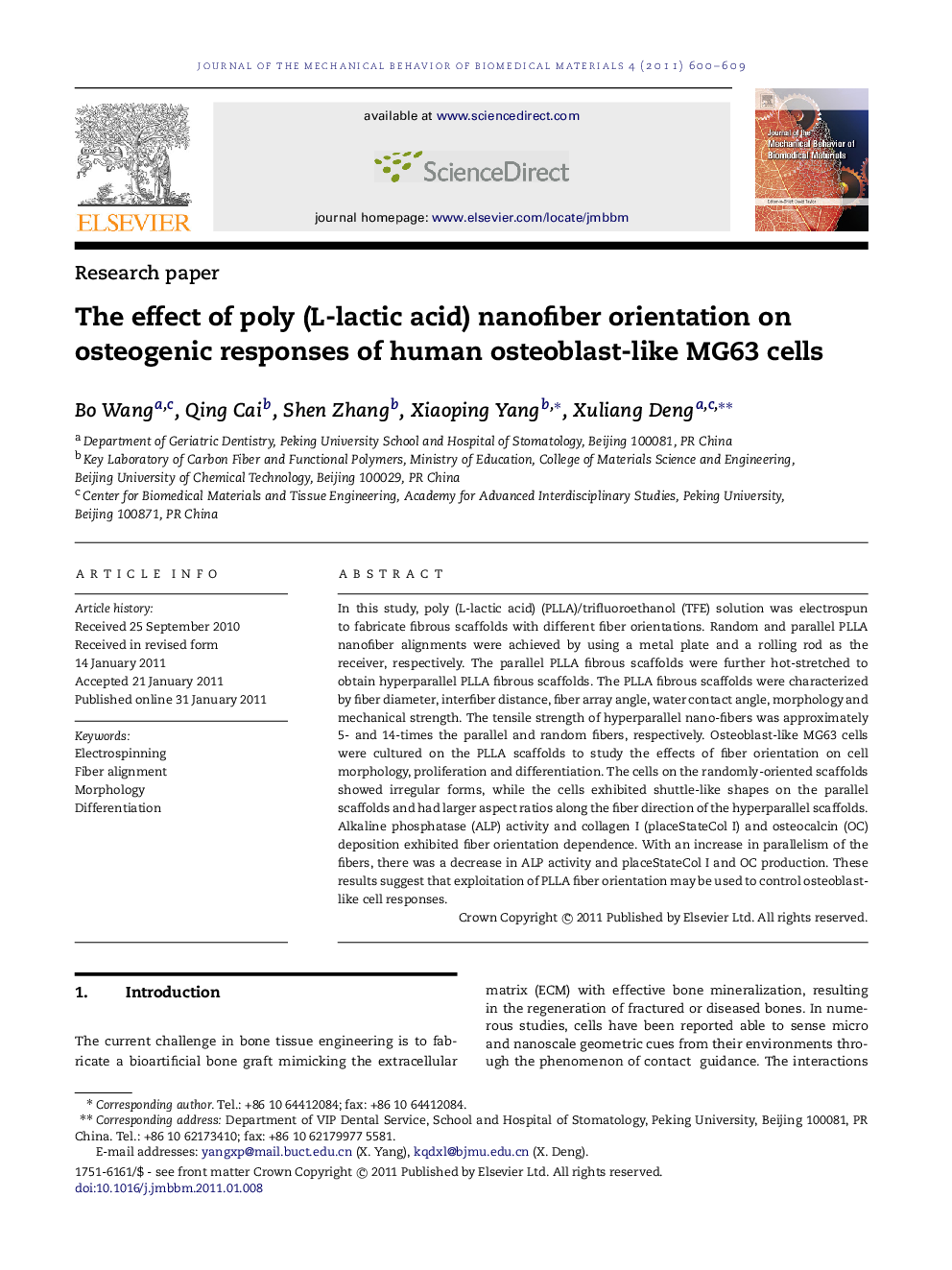| Article ID | Journal | Published Year | Pages | File Type |
|---|---|---|---|---|
| 811218 | Journal of the Mechanical Behavior of Biomedical Materials | 2011 | 10 Pages |
In this study, poly (L-lactic acid) (PLLA)/trifluoroethanol (TFE) solution was electrospun to fabricate fibrous scaffolds with different fiber orientations. Random and parallel PLLA nanofiber alignments were achieved by using a metal plate and a rolling rod as the receiver, respectively. The parallel PLLA fibrous scaffolds were further hot-stretched to obtain hyperparallel PLLA fibrous scaffolds. The PLLA fibrous scaffolds were characterized by fiber diameter, interfiber distance, fiber array angle, water contact angle, morphology and mechanical strength. The tensile strength of hyperparallel nano-fibers was approximately 5- and 14-times the parallel and random fibers, respectively. Osteoblast-like MG63 cells were cultured on the PLLA scaffolds to study the effects of fiber orientation on cell morphology, proliferation and differentiation. The cells on the randomly-oriented scaffolds showed irregular forms, while the cells exhibited shuttle-like shapes on the parallel scaffolds and had larger aspect ratios along the fiber direction of the hyperparallel scaffolds. Alkaline phosphatase (ALP) activity and collagen I (placeStateCol I) and osteocalcin (OC) deposition exhibited fiber orientation dependence. With an increase in parallelism of the fibers, there was a decrease in ALP activity and placeStateCol I and OC production. These results suggest that exploitation of PLLA fiber orientation may be used to control osteoblast-like cell responses.
